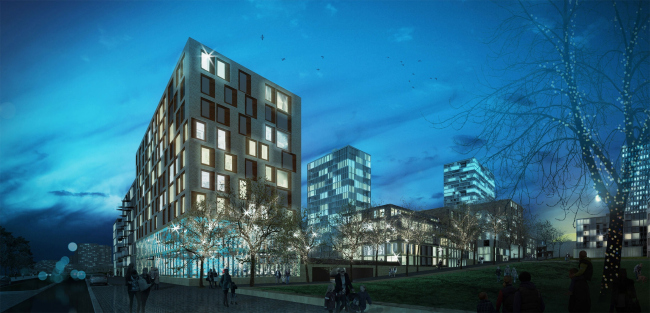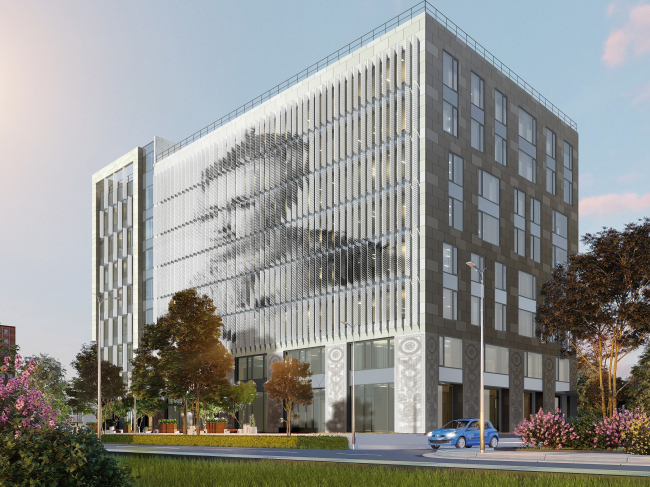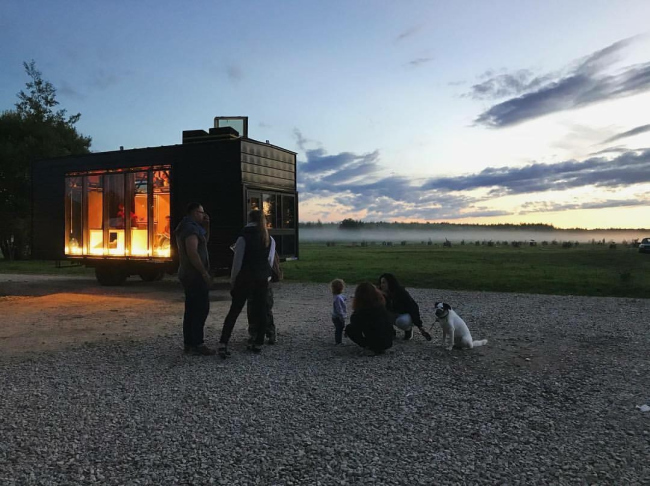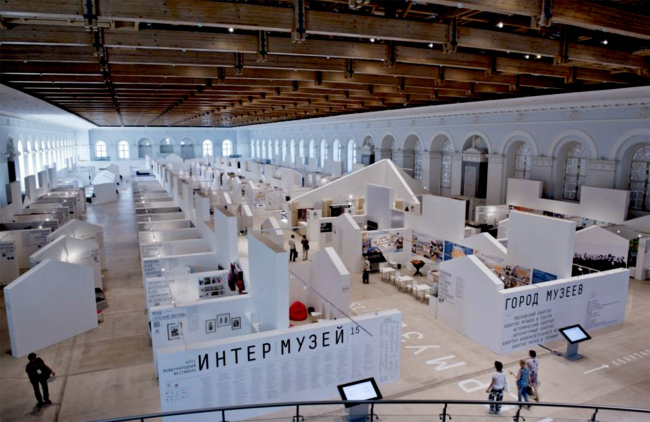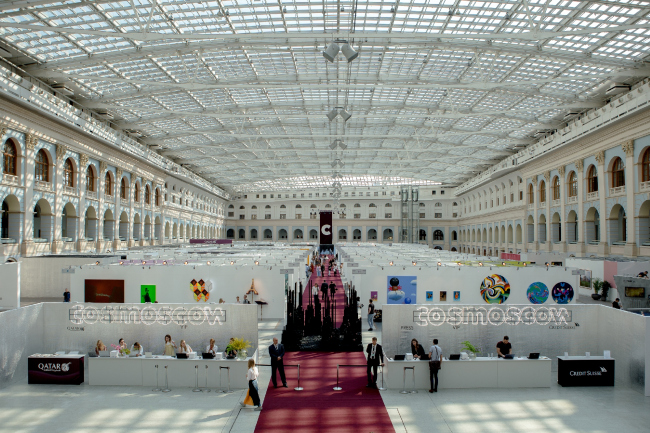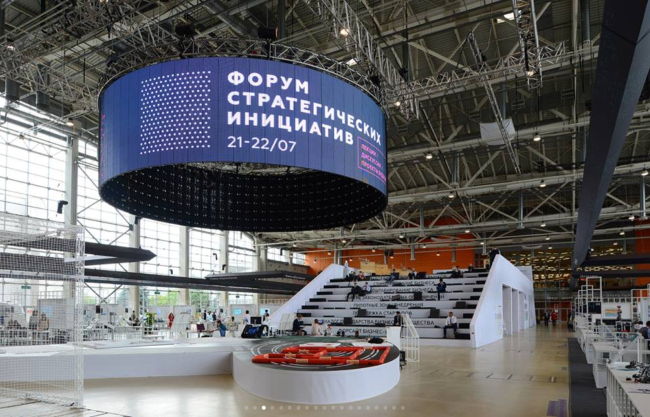|
Published on Archi.ru (https://archi.ru) |
|
| 01.10.2018 | |
|
ATOM ag: “Provocative, Innovative, Beautiful” |
|
|
Julia Tarabarina |
|
| Studio: | |
| ATOM ga | |
|
ATOM group is a new interdisciplinary team of architects founded by Rustam Kerimov, Yury and Mark Safronov and Natalia Zaichenko on the basis of A-GA, AM PROEKTUS Architectural Office, and NZgroup. In this issue, we are trying to find out what the new group is all about – as is already known, its plans are quite ambitious: participating in contests, developing new types of façade materials, educational projects, urban planning, and expo design. All of these are united by the principle of “turnkey” solutions for project development. Yury Safronov, Mark Safronov, Rustam Kerimov. Photo: ATOM agRecently, a strong team of designers from Studio N22 of AO “Mosproject”, headed by Mikhail Alekseev, went over to AM PROEKTUS Architectural Office. Practically at the same time – this summer – Rustam Kerimov of A-GA architectural firm, together with his old friend Mark Safronov from PROEKTUS, organized an architectural company called “ATOM”. AM PROEKTUS will take on large-scale projects (implementation and working documents stages), while its affiliate ATOM will generate ideas and concepts, as well as take on competitions, exhibitions, trade shows, and many other things, representing the creative part of the team. As a result, the architects are getting a full-cycle company that is capable of keeping the projects from ideas to their implementation, without losing, as the architects hope, what value the project has in it along the way. Below we are going to try to make sense of it all, and find out more what the context of such transformation. Yury Safronov, Mark Safronov, Rustam Kerimov. Photo: ATOM agYuri Safronov Yury Safronov worked in Studio N22 of AO “Mosproject”, more known as the “Meerson Studio”, until 2000, after which he left it to found his own firm AM , but he was still able to keep friendly ties with Andrey Meerson, who continued to work in the studio until 2006. Yury also worked for ABD architects headed by Boris Levyant; later on, he worked on many projects together with Pavel Andreev. Currently, Yury heads AM PROEKTUS and teaches at the Moscow Institute of Architecture. 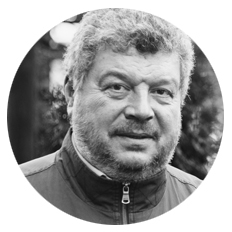 Mark Safronov The son of Yury Safronov, Mark went to EDAS school founded by Vladislav Kirpichev. In his graduation thesis, Mark researched the methods of transforming the “intuitive” parametric field into form, including the methods of applying specialized medical software. 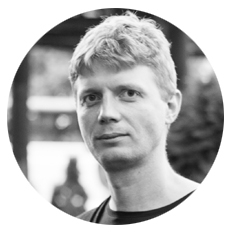 Mark is also interested in urban planning, new technologies, nonlinear and parametric design, and software development. He regularly visits hack days of computer programmers (also known as “hackathones”), considering their format to be equally applicable and productive for architectural discussion. Mark works in AM PROEKTUS, where he introduced the ideas of collaborating with headed by Sander Lap, did a number of competition projects and came forward with a number of educational initiatives. Mark Safronov. Intuitive field. Illustration of the research work done at EDAS school of Vladislav Kirpichev © Mark SafronovRustam Kerimov Rustam us known for his participation in “Arkhstoyanie” festival. He is the founder of the architectural firm A-GA, whose portfolio includes projects ranging from individual art objects to large-scale housing complexes and public buildings. He and his team also worked for Studio 22 of “Mosproject” on competition projects, complementing its predominantly classical architecture with modernist proposals. The project of the building of Krasnodar Nongovernmental Expertise got shortlisted for the “Primety Gorodov” (“Signs of the Cities”) prize. Rustam and Mark went to the university together. Both warm up to the subject of their internship in Japan, where the work of the interns was supervised from the side of the Moscow Institute of Architecture by Vasily Aurov, and from the Japanese side – by the pupil of Eisenmann, deconstructionist Hiromi Fujii. In the early 2000’s, Mark and Rustam worked together for a while on a number of projects, including the projects of reorganizing the restaurant chain of the Gorky Park. Polycentricity ATOM is not an acronym but rather a sign that is meant to accentuate the wide range of tasks spinning around one single common center, i.e. the project: “We see ATOM as a group of interdisciplinary experts, which will not limit itself to designing buildings alone and taking part in architectural competitions; the range of its activities will be significantly wider – landscaping, expo design, and museum projects. ATOM’s circle of interests will also include educational cases connected to urban development. We are also interested in developing new façade construction and decoration materials. We are planning to go global; in fact, we are already working with numerous colleagues from abroad” – the architects say. Competitions Currently, Atom is planning to take part in twelve contests a year. The idea was sparked by Junya Ishigami, who takes part in twenty competitions a year with a high victory ratio – Mark Safronov worked a lot with Ishigami when both worked on adapting his project for reconstructing the Polytechnic Museum; at the time, AM PROEKTUS was a subcontractor designer of “Mosproject-2” headed by Pavel Andreev. The company does have experience in taking part in competitions, including large ones – the 2012 competition for renovating the territory of “Dorkhimzavod” on the Berezhkovskaya Embankment and the 2015 contest for the Rosatom pavilion. In collaboration with , they took part in the competition for the reconstruction of the Danilovsky Market where they came forward with a proposition to clear it from whatever later layers were there, organize inside an exciting spiral-like space, and accentuate the dolls created by Nodar Kancheli by mounting light boxes on the walls. In the same collaboration (also in 2015), they took part in the competition for organizing the territory of the “Crystal” factory, where their project, the chief part of which was the Forum – an open, yet awning-protected square – got the third prize.  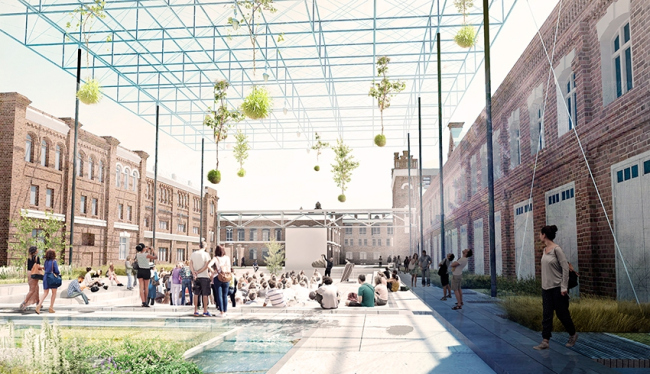 Redevelopment of the territory of "Crystal" factory © AM PROEKTUS & LAPLAB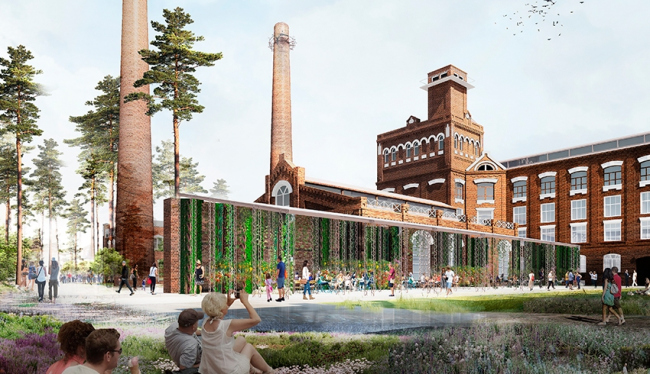 Redevelopment of the territory of "Crystal" factory © AM PROEKTUS & LAPLAB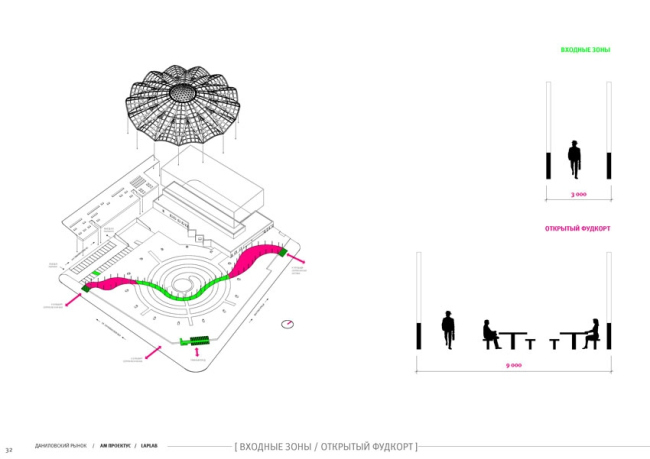 Danilovsky Market, a competition project, 2015 © AM PROEKTUS & LAPLABIn 2013-2014, the concept of renovating the “Serp i Molot” (“Sickle and Hammer”) factory, developed by AM PROEKTUS in a consortium with and , got the first place in the contest for the redevelopment of the factory building, according to the opinion of the judging panel. The experts’ attention was attracted by the architects’ tactful treatment of the industrial buildings and the “genius loci”: “We saw our task in demonstrating that an industrial park is not some “omission” in the city fabric but a territory in its own right, with a structure, a character, ways and even monuments of its own. Any such place will offer something that you will find worth saving; we also saved some of the structures. As for the parceling of the newly-built urban blocks, we also inscribed them into the blueprints of the former factory buildings. In addition, the project was good from the economic standpoint; we arranged it all in such a way that our client did not ultimately have to build everything at the same time but could work with individual buildings as he progressed along”. Still, the client picked a different project for implementation, and since then nobody spoke about saving the charm of industrial parks. 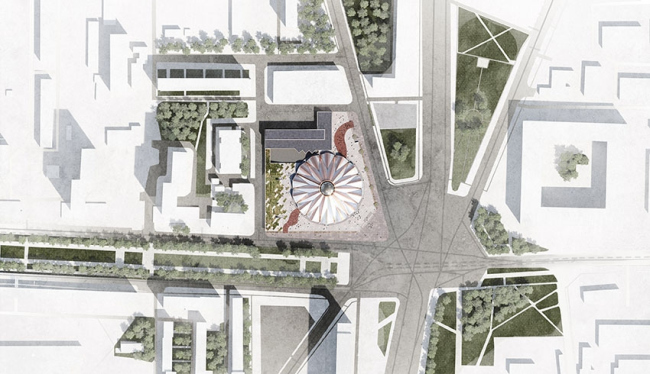 Danilovsky Market, a competition project, 2015 © AM PROEKTUS & LAPLABArchitectural and town planning concept of developing the territory of "Serp i Molot" factory © MVRDV & AM PROEKTUS & LAPLAB Architectural and town planning concept of developing the territory of "Serp i Molot" factory © MVRDV & AM PROEKTUS & LAPLAB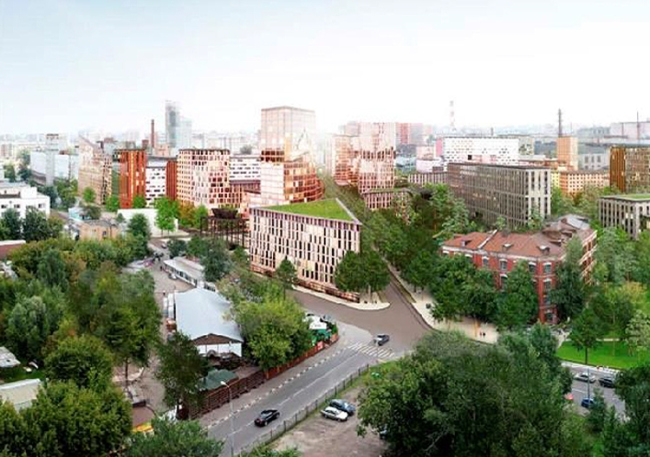 Architectural and town planning concept of developing the territory of "Serp i Molot" factory © MVRDV & AM PROEKTUS & LAPLABOne of the contest proposals submitted for “Mosproject-1” for the 2015 competition for the building of the Parliamentary Center in the Mnevnikovskaya Poima was designed by A-GA in collaboration with Stepan Lipgart: an imposing edifice with large inside yards in the spirit of the giant power plants of the early Soviet days. The project had two versions of image design solutions based on one planning structure: one in the vein of architecture of the 1930’s that Stepan likes so much, and the other, proposed by us – totally modernist. A year ago, A-GA took part in the contest for the second stage of construction of “Zolotoy Ostrov – 2”, competing with such companies as SPEECH, Sergey Skuratov architects, and Tsimailo, Lyashenko, and Partners. Architectural and town planning concept of developing the territory of “Serp i Molot” factory © MVRDV & AM PROEKTUS & LAPLABThe Parliamentary Center, a competition project, 2015. Version 2 © A-GAThe Parliamentary Center, a competition project, 2015. Version 2 © A-GAThe Parliamentary Center, a competition project, 2015. Version 2 © A-GAThe Parliamentary Center, a competition project, 2015. Version 1 © A-GAUrban planning and design Most of the projects covered above are essentially urbanist ones: the road winding through the Danilovsky Market, the Crystal Forum, and the conservation of the industrial aura of “Serp i Molot”. Yet another contest project, also designed in collaboration with LAP, is an urban block in the city of Belgorod, where the main theme was “further development” and making the existing construction denser, as well as separating the private and public spaces. In the center of the urban block, there is a large green square with geo-plastics. 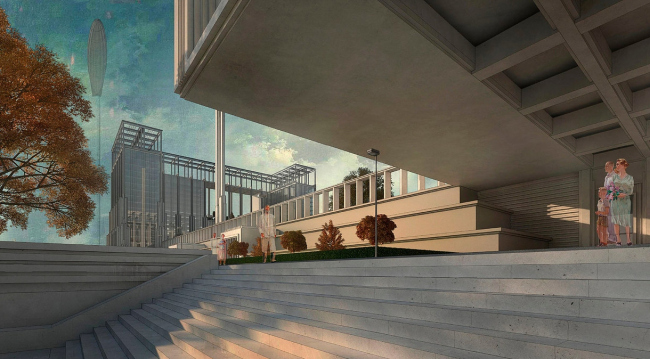 The Parliamentary Center, a competition project, 2015. Version 1 © A-GA Competition proposal for developing a residential area in Belgorod © LAPLAB & AM PROEKTUS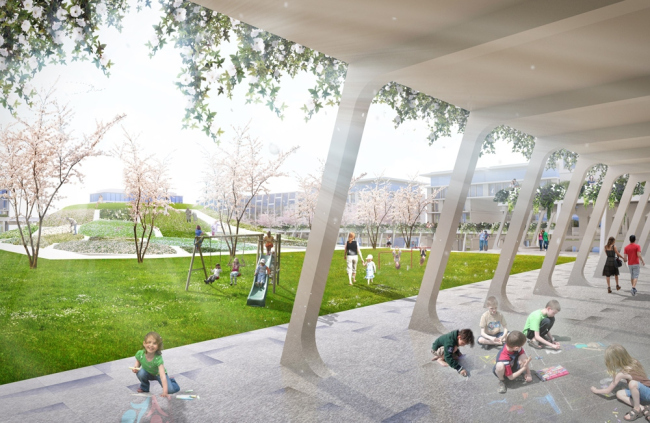 Competition proposal for developing a residential area in Belgorod © LAPLAB & AM PROEKTUSVolga Vista - City Park © LAPLAB & AM PROEKTUSToday, after ATOM group has been formed, the architects are working on the project of developing the territory of seaside hotels in Anapa. The principles, with which ATOM approaches its urban planning tasks, are equally applicable here: the feeling of safety and cohesiveness of all the parts must be inherent not only to the closed space of the building but to the open city space as well. As for the fact that the urban environment becomes denser, the architects consider it to be a positive trend – they are sure that high-technology production facilities, instead of being ousted, must be integrated into the urban environment. New façade materials One of the interests of Rustam Kerimov is bringing together architectural design and the technological creative activities dedicated to inventing new materials and breathing a new life into old ones. “The economic situation in Russia pushes us to come up with solutions of our own instead of buying the western materials, which are good but prohibitively expensive, these new solutions being innovative and technology-friendly. Our principles are: provocative, innovative, beautiful”. For example, for the office of “Krasnodar Expertise” A-GA developed a special kind of cassettes: they bent pieces of steel, perforated them, and backlit them from the inside. The same company that actually manufactured these cassettes had them officially certified along with the façade coating system – and the architects got a product that had a certain value and could be used on other buildings. Incidentally, the script for the perforation pattern was written by Maxim Malein. Volga Vista - City Park © LAPLAB & AM PROEKTUSBuilding of the company "Krasnodar Interregional Nonstate Expertise". Krasnodar, Garazhnaya Street, 2017 © A-GACurrently, the architects continue working for Krasnodar, designing there the façades of an office building and using on it lamellae with parametric properties, which will change the picture on the building depending on the angle of vision. 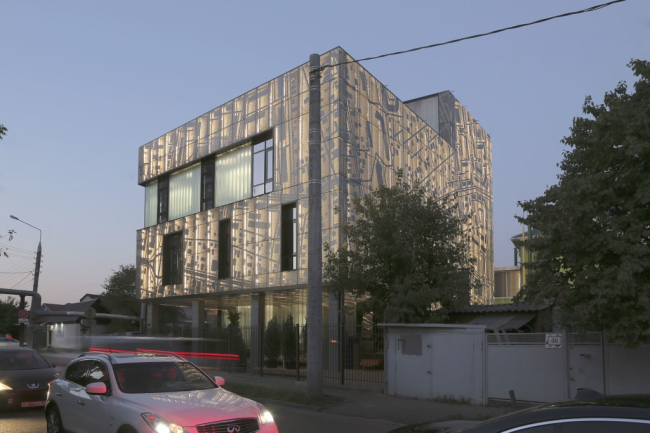 Building of the company "Krasnodar Interregional Nonstate Expertise". Krasnodar, Garazhnaya Street, 2017 © A-GA“In the city of Yaroslavl, we are building a housing complex next to the Yakovlevsky Forest – Rustam Kerimov shares – for this project, we came up with profiled sheets and panels that are used in combination with Klinker brick. This brought out the best in both materials, while using the metallic cassettes on 50% of the surfaces made the economics of the building really efficient”. What is being built now The housing project near the Yakovlevsky Forest is being cast in concrete. In Voronezh, a building is almost complete on the Grodnenskaya Street, currently it is one of the tallest buildings in the city, 28 floors. Also, a house is being built on the Dmitrovskoe Highway. "Ekaterininsky" business center in Krasnodar © ATOM ag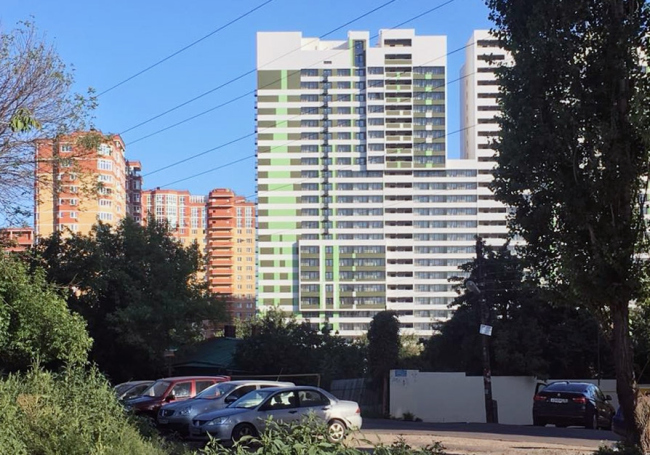 The housing complex on the Grodnenskaya Street in Voronezh, 2016-2018 © A-GA & ATOM agIn collaboration with Pavel Andreev, PROEKTUS is building the housing complex “Dostoyanie” for GALS developers; currently, the company Donstroy is starting to actively develop the district of Ramenki, the town planning concept of which belongs to the British LDA, while PROEKTUS does the in-service control of the project. Branding Naming as the constituent part of a project design is also included in the circle of themes that ATOM is going to explore. In this area, ATOM will make use of the design studio Pixies – it is also developing the new updated version of AM PROEKTUS website. Smaller forms The productive hobby of Rustam Kerimov, supported by Mark and Yury Safronovs: “working with smaller forms is a must – it helps you to keep up your professional level and your sense of responsibility”. The “smaller forms” are understood in a broad context and range from interior design of private residences to art objects displayed at festivals. The : a low-rise wooden house executed in the paradigm of open development. Initially, the summer kitchen was added to the old timber framework of a bath made of century-old cedar; then the architects gradually added guest rooms, and a yoga room, connecting all of the rooms with an overpass, the timber bath ultimately finding itself inside of the house. Apartments on the Dmitrovskoe Highway © A-GARecently, a villa near the city of Kazan was finished – a wooden modernist parallelepiped; two more villas are in construction in Sochi. A “stack of firewood” house: a temporary home for the villa construction workers on the site, a miniature house, the façade of which is designed as a stack of firewood. The firewood comes and goes, the house constantly changes, it “breathes”. The main villa never was actually built but the “stack of firewood” got its share of fame being awarded the prize at ArchiWOOD exhibition. The growing house © A-GA“The wagon”: “a house on wheels for the troupe of actors directed by Yuri Muravitsky, who made a presentation at “Arkhstoyanie”. This was a total theater, and they were the exhibits because they lived behind the glass, one wall being actually glass, while the house itself was a theater stage. It was even more interesting than the theater performance itself. The whole thing was built on the basis of a small bus PAZ 32053. The bus had to be reinforced, a steel framework was made, and then only lightweight materials were used in order to make sure that the suspension does not go underground. It ultimately was a success – meaning, you can ride it and live in the Wagon like you would in a hotel. When Polissky’s “Gothic” was being burned down, it was a true art cinema shot – a deejay sat in it, playing records”. The “stack of firewood” house © Rustam Kerimov, A-GAKibitka ("The Wagon"). Project for the "Arkhstoyanie 2017" festival © A-GAEducational activities Mark Safronov educational project that is due to be launched next year will be done in collaboration with Svetlana Serebryakova: “She already did some projects for the city of Perm and All-Russia exhibition center, she also is one of the cofounders of the Urban Forum, and she has a tremendous experience in the field of town planning. The course is designed for industry specialists of the “head of the studio” level; it consists of five-six modules three days each, with full immersion – a boot camp format similar to hackathone. The goal is to widen the range of competences of the students so that the architect could also function as a competent client for land survey services. Today it is often the case that the land site is simply “dumped” on an architect with already given parameters, functions and square meters – and what we want to do is help the architects take a more active part in the process while still in the stage of forming the idea”. Recently, an interior design project was finished for the children’s technology park “Naukograd” on the Profsoyuznaya Street, which was designed by Rustam Kerimov in collaboration with the graphic designer Anna Zernova, the artist Lilia Bores, and Svetlana Zabelina: “in this place, they teach high school and college students modern technologies; there are classes of robotic science, architecture, graphic design, and 3D modeling. The place has 3D printers in it, there are lecture spaces, a cinema lecture hall, a technology museum, and a coworking spaces”. Kibitka ("The Wagon"). Project for the "Arkhstoyanie 2017" festival © A-GA. Photograph © Aleksey NaroditskyChildren's technology park "Naukograd", interior, 2016-2017 © A-GARustam and Mark were also invited to work in Naukograd; there are also plans for creating a string of seminars called “City of the Future” – which must lead to creating a prototype for the “house of the future”, which will be installed on the territory of the technology park. Exhibitions The colleague of Rustam and Mark, Natalia Zaichenko, who took part in the earlier projects of A-GA – specifically, she contributed to designing an economy-class, yet still upbeat, house called “Patriot” with triangular balconies on brick walls, and to the project of reconstructing the “Ostankino” TV center, which was realized as painting it the colors of the color bar test pattern – now, since 2013, has been actively exploring the field of . Children's technology park "Naukograd", interior, 2016-2017 © A-GA“I always wanted to do something that would require my interdisciplinary skills, something exciting – especially after five years of working with project documents. In 2014 I graduated from “Strelka” institute, which ended in a performance and my personal exhibition – this was the first exposition that I designed myself. I really enjoy creating conceptual and elegant background for various kinds of content of different scales because the modern human being needs a comfortable atmosphere that enhances the quality of one’s perception of visual information. This is something that I call “expo urbanism”. 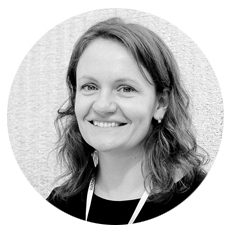 The exhibition "Intermuseum-2015", exposition design by Natalia Zaichenko. Photograph © IntermuseumThe exhibition "Cosmoscow-2018", exposition design by Natalia Zaichenko. Photograph © Alexander KovalchukMuseum of Russian Imressionism, exhibition "Impressionism in Avant-Garde". Exposition design by Natalia Zaichenko. Photograph (c) Museum of Russian ImpressionismNatalia has already designed five exhibitions of contemporary art “Cosmoscow” (Moscow, Gostiny Dvor), the Qatar grand reception in Moscow Manezh, and a few conventions of the Forum of Strategic Initiatives. Natalia also works in a more “intimate” format – for example, with the design of the exposition of the Museum of Russian Impressionism and the Polytechnic Museum. She also has plans for developing her own modular system for building exhibition booths. Natalia Zaichenko will head the expo division of ATOM. “Provocative, Innovative, Beautiful” When asked about their creative principles, Mark Safronov and Rustam Kerimov give the answer that you have already seen above – no further comment is necessary. None |
|










